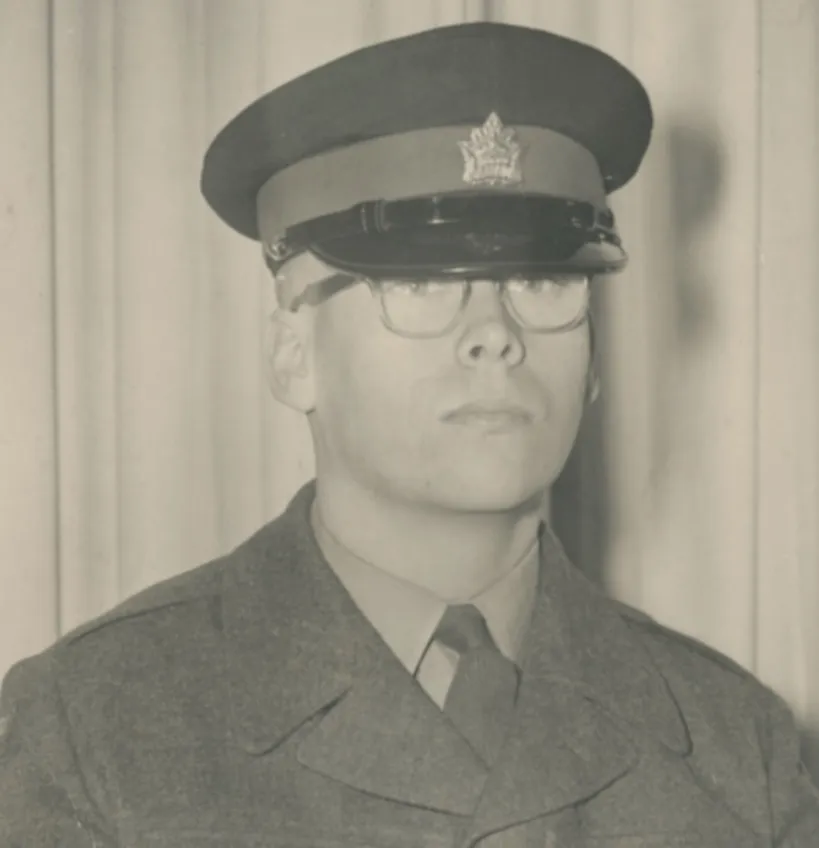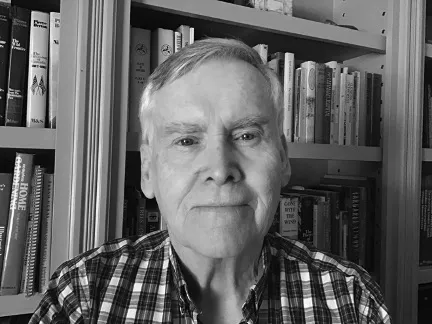30 Gold Street
Robert Lewis Rashleigh Hasler

Bob was born and raised in Brantford into a military family. His father was the Regimental Quartermaster Sergeant and later Regimental Historian for the 56th Field Artillery. As a result, Bob lived for a time with his family in the Brantford Armouries. He joined the Army Cadets while a student at BCI and later joined the 56th Field Artillery Militia as a gunner.
Bob joined the Royal Canadian Army, first as a musician, then later transferred to the Royal Canadian Ordinance Corps. He was sent to Long Point Barracks in Montreal to get his Ordinance training, then to Camp Petawawa where he served in 2 Ordinance Field Park and the Munitions Depot.
Bob was serving there during the October Crisis. The October Crisis in 1970 was a period of intense political and social unrest in Canada, triggered by the Front de libération du Québec (FLQ), a Quebec separatist group resorting to violence and terrorism. The crisis saw the kidnapping of two prominent figures, British diplomat James Cross and Quebec Vice-Premier Pierre Laporte, by the FLQ. In response, Prime Minister Pierre Trudeau invoked the War Measures Act, suspending civil liberties and authorizing the arrest and detention of suspected FLQ members.
As a member of the Ordinance Corps, Bob and his fellow soldiers were required to defend the army’s weaponry. He has told some of his experiences during the crisis:
“As a young man, it was scary and an exhilarating time. I remember, at the time, I was on leave at home, when I got the call to report for duty. My buddy, Mike, lived in Brownsville. He got the call, picked me up and we headed to Petawawa. When we arrived at the main gate, there were loops of barbed wire on the road creating a “S” shaped entrance. There were also search lights lighting up the sky. We did not know what was happening. We reported in and were told to go to our residence (off base) kit up and report for duty. I did not get back to my home for two and a half weeks! We were under MARTIAL LAW!
Over that time, I did guard duty at the Ammo Dump railway entrance. I didn’t know if I would challenge anyone who showed up on the other side of the gates as we had been trained, or shoot first and then challenge. I knew the sides of the tracks were mined with anti-personal mines. So, if somebody showed up, they were either very stupid or up to something bad!
I was later assigned as a courier to take documents etc. from Petawawa to Ottawa. My orders were to stop for “NO ONE”! Beside me was an attaché case, SMG (Sub Machine Gun) fully loaded and a Browning 9mm, again fully loaded. I remember driving into Ottawa, and saw Armoured Personal Carriers located at various intersections, with soldiers standing on guard in full combat gear. It was surreal.”

Bob’s experiences remind us that Paris veterans did not serve only in wartime but are vital to our national defence as well. Bob had to leave the military with a medical discharge due to a back injury he received while in service. Bob and his wife, Patricia, moved to Paris, to 30 Gold Street, where he has been a very active local historian. He has served as the Secretary, Vice President and President of the Paris Historical Society. He has also served as Curator of the Paris Museum for many years. He now holds the title of Curator Emeritus. Bob has also written a five-volume book called Paris Junction, which is a detailed history of that Paris neighborhood where his wife Pat grew up and where the couple continues to live.
